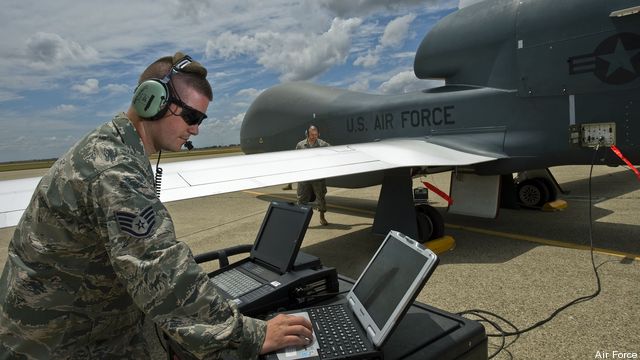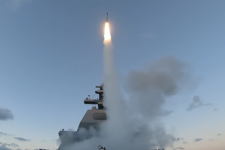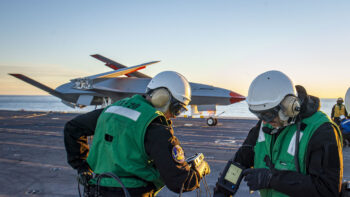
An airman tests out a RQ-4 Global Hawk prior to flight.
WASHINGTON: Just weeks before winning a place in the Air Force’s coveted Skyborg program, Northrop Grumman held a ‘pitch day’ seeking innovative startups to help it with developing cutting-edge autonomous systems.
“Technologies on sense and avoid are really rapidly evolving,” Hunter Hudson, Northrop’s head of Autonomy Technology, told me in an interview earlier this month. For example, he said, the small UAV market is innovating on ways to avoid obstacles, weather patterns and fly in city spaces where GPS access is denied.
Developing and operating with autonomous systems is “really about how the human can define the objectives that they want accomplished and the constraints that must be followed, and the autonomous system is going to go complete those objectives within those constraints in a really dynamic operating environment where things are changing.”
As Breaking D readers know, Northrop Grumman was one of four contractors (Boeing, General Atomics and Kratos) chosen by the Air Force last week to compete for future production under the Skyborg program, aimed at integrating autonomous, attritable unmanned air vehicle (UAV) technology with open missions systems to enable manned-unmanned aircraft teaming. The Skyborg ‘brain’ could perform missions such as gathering telemetry, flight plans and weather data to provide to the pilot of the manned jet. Over time, the hope is that Skyborg would evolve through the injection of new software into an AI pilot system — something Air Force acquisition head Will Roper has nicknamed R2-D2 after the famous drone of the “Star Wars” film franchise.
Northrop Grumman also is the prime contractor for the venerable RQ-4 Global Hawk drone that the Air Force is seeking to retire. Congress, however, is concerned that the service is moving too fast to do so. Both the House and Senate Armed Services Committees inserted language into their 2021 defense policy bills that require the Air Force to prove that the successor to Global Hawk can provide equal or better capability to Combatant Commanders.
While Hudson wouldn’t provide details about the companies involved, he did say he expects that Northrop Grumman will work out contractual relationships with all 10 of them in the future. How those business relationships are set up is case-by-case — part of an overarching corporate strategy to move quickly to capture commercial innovation and bring it to Northrop’s government customers.
For almost five years, Northrop Grumman has been working with Starburst Aerospace, an accelerator that connects start-ups with corporate entities, as well as provides capital through its own venture fund and through partnering with outside angel investors.
“What we’ve seen happening in the last few years is [industry] really embracing this notion of what we call open innovation, which is where programs like the areas that Hunter oversees become much more creative in how they work externally with early stage, hyper-growth businesses,” Van Espahbodi, cofounder and manager of Starburst, said in the joint interview with Hudson.
In essence, he explained, Starburst scouts for startup firms (no older than 5 years) in emerging high tech sectors, such as autonomy, quantum science and alternative energy, that have or are near to having prototypes to match with Northrop Grumman’s defined needs.
“We’re always interested to see how are these smaller startups solving these problems, and going back to first principles to say: ‘this is the problem they had, this is how they solved it, and how does that transfer to systems that we built?” Hudson said.
During the autonomy pitch day, the startups made their pitches to some 250 program leaders across Northrop Grumman’s business portfolios, he explained, to see if the technologies/services being pitched were possible solutions for the problems faced by various Northrop customers.
“Innovation comes from collaboration,” Hudson said.
Lockheed wins competition to build next-gen interceptor
The Missile Defense Agency recently accelerated plans to pick a winning vendor, a decision previously planned for next year.


























